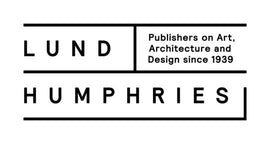A Good Moment for Sculpture Books
Lund Humphries author Valerie Holman discusses The Sculpture of Francis Derwent Wood, the final volume in the long-running British Sculptors and Sculpture Series, and considers the role of the artist’s monograph amongst wider efforts to promote sculpture as an art form in Britain.
At the end of 2015 Lund Humphries, in association with the Henry Moore Foundation, published a beautifully designed and generously illustrated volume on Francis Derwent Wood (1871-1926), the last in a series of twenty-four monographs on British Sculptors and Sculpture of the twentieth century, launched in 1992. As Ann Compton pointed out in 2013, when she assessed the BSS series as a whole and the role of monographs in shaping reputations, books on individual sculptors do more than provide detailed information about an artist and their complete work.[1] Informed not only by new historical research, but also by contemporary issues that suggest a new approach, each author develops different aspects of the context in which the artist’s life and work is situated.

In his essay on Derwent Wood, for example, Matthew Withey provides a much-needed counterweight to the plethora of publications on direct carving by writing in detail about ‘the last of the modellers’. He also maps the international networks of artistic teaching and influence that stretched from France and Germany to Holland and thence to London and Glasgow. In a career that divides neatly into periods according to his main activity – ‘gallery’ sculpture, architectural decoration, prosthetics or portraiture – Derwent Wood explored the full range of sculptural practice available to a modeller. On his return to London, he took a studio in Chelsea and focused on portraits, such as that of the sculptural critic Kineton Parkes (1865-1938) c. 1915 (fig. 1), yet is probably best known for one of his most controversial and, until recently, least understood works: The Machine Gunners’ War Memorial c. 1925, at Hyde Park Corner (fig. 2).

Issues that concerned Derwent Wood remain pertinent today. Who should be commemorated, and in what form? How are the limits of representation in portraiture to be defined? What constitutes a successful relationship between sculpture and architecture? While ‘gallery sculpture’, especially by post-war artists, commands increasingly high prices, a great deal of sculpture in the public domain has been lost to theft, vandalism, housing development and major construction projects such as Crossrail, while certain sculptural monuments created by Derwent Wood’s generation are now in danger of being removed because public attitudes to the individual portrayed have so greatly changed. Following agitation by the ‘Rhodes Must Fall’ movement in South Africa, for example, the sculpted likeness of Cecil Rhodes was removed from the University of Cape Town in April 2015, while another campaign was launched to remove a Rhodes statue from the façade of Oriel College, Oxford. This year, however, the results of several attempts to record, identify, restore, publicly promote, and fundamentally re-think the nation’s sculptural heritage, are coming to fruition.
In addition to galleries that specialise in sculpture, such as Lisson or Pangolin at King’s Place in London, nationally significant shows of post-war sculpture have recently been mounted in a variety of venues beyond the metropolis. In 2013 Lund Humphries published Elisabeth Frink, Catalogue Raisonné of Sculpture, 1947-93 and this was followed in 2015 by a major exhibition of 70 works, Elisabeth Frink: the Presence of Sculpture, at the Djanogly Gallery, Lakeside Arts Centre in Nottingham. Meanwhile at the New Art Centre in Salisbury Shaping a Century: Works by Modern British Sculptors includes twelve artists who have been the subject of a Lund Humphries monograph, nine of them in the BSS series, including: Kenneth Armitage (1997), Reg Butler (2006) and William Turnbull (2005).
This generation is also at the heart of an ambitious, accessible and highly informative exhibition explaining how our national collection of public art was formed between 1945 and 1985, why it matters, and how it can be saved. Organised by Historic England and shown at Somerset House, Out There: Our Post-War Public Art also features a number of artists who have been the subject of Lund Humphries books, notably Henry Moore, Barbara Hepworth, Elisabeth Frink, Eduardo Paolozzi and F.E. McWilliam.
Alongside Lund Humphries monographs, and under the auspices of the Public Monuments and Sculpture Association, Liverpool University Press has so far published sixteen volumes in its own series, Public Sculpture of Britain, documenting each work in a particular region and providing increasingly comprehensive coverage of national sculpture outside the gallery. In addition, the PMSA’s National Recording Project database of 10,000 entries on public monuments and sculpture in Britain will, in 2017, become part of ‘Your Sculpture’, a companion project to ‘Your Paintings’, the highly successful joint initiative between the Public Catalogue Foundation (now known as Art UK), 3,000 museums and other art collections, and the BBC. The drive to engage a wider public with sculpture they can easily see is only part of the current renegotiation between object and audience.
Sculpture currently has a high profile, not just as the outcome of controversy, but also because of well-planned campaigns to re-connect the public with its national sculptural heritage, and to reconsider a generation of sculptors somewhat eclipsed by the shadow of Henry Moore. It is in this auspicious climate of increasing demand for more information on individual sculptors, and on the historical context of a sculpture’s installation, that well-researched and fully illustrated publications on sculpture are needed more than ever.
[1] Ann Compton, ‘Affirmative action: British Sculptors and Sculpture and the monographic form in twentieth-century sculpture studies’, Sculpture Journal 19, 2013, pp. 77-88.
Valerie Holman is an independent art historian who writes on twentieth-century art and publishing. Recent books include Print for Victory: Book Publishing in England 1939–1945 (British Library, 2008) and, with Denise Ferran, The Sculpture of F.E. McWilliam (Lund Humphries, 2012).
SPECIAL OFFER:
Get 35% off a selection of our sculpture books, by using code SCULPT35 atcheckout.
Offer ends 31 March 2016.

